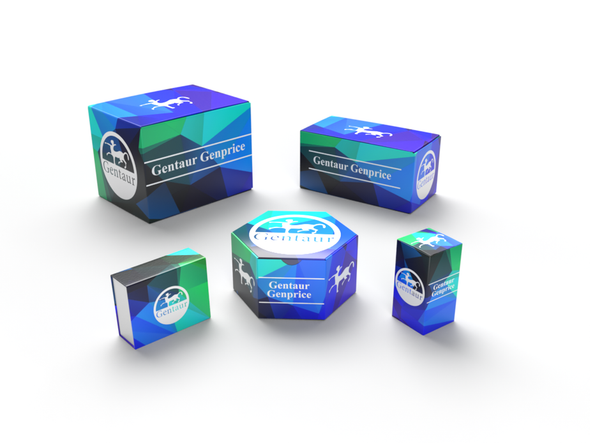Description
14-3-3 Antibody | 50-178 | Gentaur UK, US & Europe Distribution
Host: Rabbit
Reactivity: Human, Mouse, Rat, Dog, Zebrafish, Bovine, Chicken, Frog
Homology: N/A
Immunogen: Peptide corresponding to amino acid residues from the C-terminal region of 14-3-3 protein, conjugated to keyhole limpet hemocyanin (KLH) .
Research Area: Other
Tested Application: WB
Application: The antibody has been directly tested for reactivity in Western blots with rat tissue. It is anticipated that the antibody will react with bovine, canine, chicken, human, mouse, non-human primates, Xenopus and zebra fish based on the fact that these species have 100% homology with the amino acid sequence used as antigen.
Specificiy: N/A
Positive Control 1: N/A
Positive Control 2: N/A
Positive Control 3: N/A
Positive Control 4: N/A
Positive Control 5: N/A
Positive Control 6: N/A
Molecular Weight: 29
Validation: N/A
Isoform: N/A
Purification: Affinity Purified
Clonality: Polyclonal
Clone: N/A
Isotype: N/A
Conjugate: Unconjugated
Physical State: Liquid
Buffer: N/A
Concentration: N/A
Storage Condition: 14-3-3 antibody can be stored at -20˚C and is stable at -20˚C for at least 1 year.
Alternate Name: N/A
User Note: Optimal dilutions for each application to be determined by the researcher.
BACKGROUND: 14-3-3 proteins are a family of highly conserved proteins that appear to have multiple roles in cell signaling (Bridges and Moorhead, 2005) . The proteins are abundantly expressed in the brain and have been detected in the cerebrospinal fluid of patients with different neurological disorders (Berg et al., 2003) . 14-3-3 proteins bind protein ligands that are typically phosphorylated on serine or threonine residues and regulate the functions of these binding partners by a number of different mechanisms (Silhan et al., 2004; Dougherty and Morrison, 2004) . The 14-3-3 proteins affect a diverse array of cellular processes including the cell cycle and transcription, signal transduction and intracellular trafficking.










